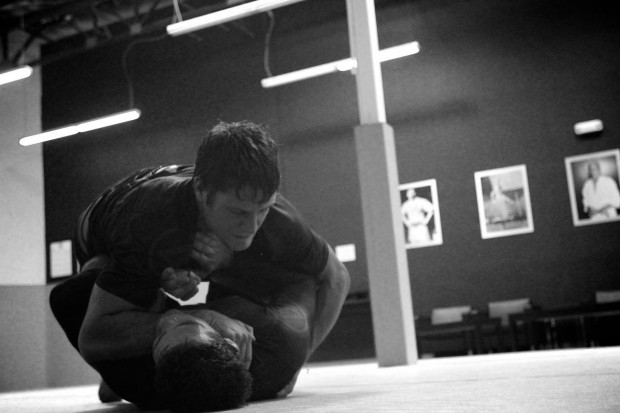How To Submit: 3 Different Strategies
Submissions are everyone’s favourite part of jiu-jitsu. There are few highlight videos of posture in the guard or guard retention. Submission is King! Have you ever thought about the different submission strategies that you might use for the exact same submission?
Not all of your submissions happen in the same way – even if you are using the exact same move! Let’s look at the straight arm-lock as our example to illustrate the different strategies.
1) Superior leverage
After a roll with a high level black belt many students of bjj has said “I knew what he was going to do…I just couldn’t stop it!” I have been trapped by the exact same arm-lock several times in a roll by my black belt instructor even though I knew exactly what he was trying to do! How did it happen?
In the mounted arm-lock, the top person has superior leverage. They can use gravity and their bodyweight to squeeze the bottom person. They are able to apply their entire body (more powerful legs and hips) against your one arm.
When one can apply a greater leverage against the opponent, the opponent tires and their defence is overcome. * This is one of the reasons why we see black belts submitted by “basic” techniques in competition.
They can not resist the superior leverage of the attack. Arm-bar specialist Ronda Rousey expertly was able to apply superior leverage against her opponent’s defense at every step in the attack.
2) Trick
read also: Fake It ‘Til You Make It
Many times when you are using a combination attack you are tricking your opponent as to your true intentions.
Example: Most of us know how to execute the basic armlock from the guard.
However, getting it on a fully resisting opponent is not so easy. As you take your grip on their arm, they recognize what you are going to do and immediately set their defense.
You are forced to abandon your armlock and try something else. However, when you attack with a cross collar choke, your opponent is forced to straighten their arms defensively to push you away and avoid the choke.
Once the opponent’s attention is on defending their neck, you spin underneath, catching the armlock. You have tricked them into defending one threat and created an opening in another. Your opponent can not commit 100% of the defence in 2 directions at once. When they protect one area they expose the other.
This is the fundamental basis of attack combinations in brazilian jiu-jitsu.
3) Unfamiliar positions
Although this happens less often as your opponent’s have more experience, taking your opponent into a position where they are not familiar gives you an advantage. In the most common ground positions, your opponent usually understands what the major threats are and have studied the correct counters.
Catching a submission when your opponent KNOWS what to expect is extra tough!
Judoka have a lot of variations attacking a turtled opponent with armbars (Ronda Rousey). Since the turtle is not used as often or in the same way under bjj rules, the bjj fighter can be susceptible to armbar attacks from this position.
One top competitor was arm locking opponent’s from the 50/50 guard position as they didn’t expect an arm lock in that position!
*This is one of the reasons why some bjj fighters are vulnerable to leg locks in no-gi competitions. They are less used to the positions and don’t know how to defend them as well.
read also:Leg Locks – 3 Important Points
The knowledge that if you bring your opponent to an area out of their comfort zone that you have an advantage leads to an “arms race” in sports bjj where competitions are constantly evolving and developing new positions to catch their opponents by surprise.
Credits: Mark Mullen
Gracie Barra Black belt based in Asia
Twitter: @MarkMullenBJJ


